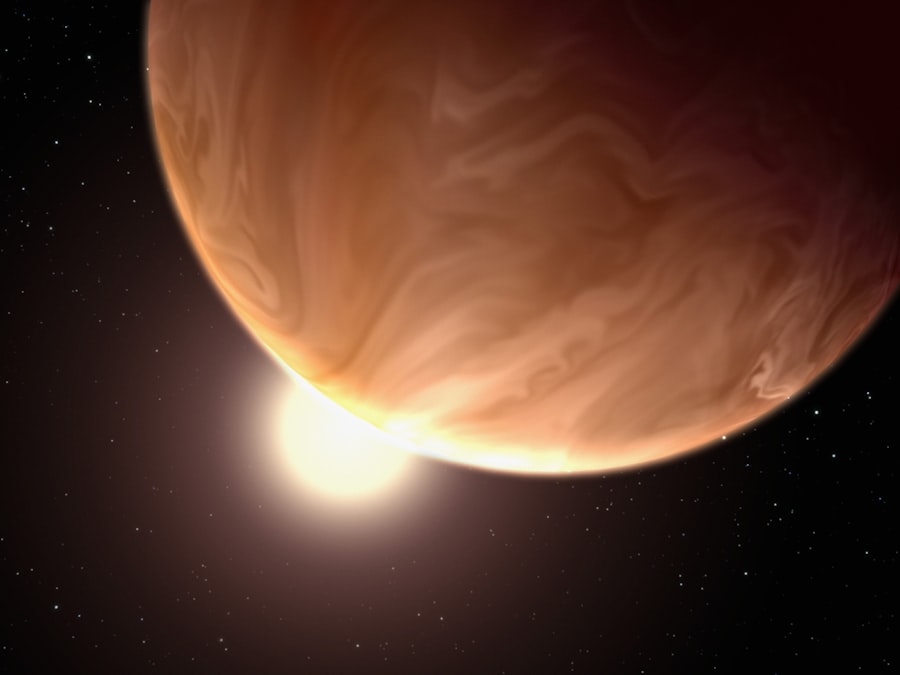Exoplanets, or extrasolar planets, are celestial bodies that orbit stars outside our solar system. The term encompasses a vast array of planetary types, ranging from gas giants larger than Jupiter to rocky terrestrial planets akin to Earth. The discovery of exoplanets has revolutionized our understanding of the universe, revealing that planetary systems are not unique to our solar system but rather a common feature of the cosmos.
As of October 2023, thousands of exoplanets have been confirmed, with many more candidates awaiting validation, showcasing the diversity and complexity of planetary formation and evolution. The study of exoplanets is not merely an academic pursuit; it has profound implications for our understanding of the universe and our place within it. These distant worlds can provide insights into the processes that govern planetary formation, the potential for life beyond Earth, and the dynamics of star systems.
The existence of exoplanets challenges long-held assumptions about the uniqueness of our solar system and raises intriguing questions about the nature of life in the universe. As astronomers continue to refine their techniques for detecting and studying these distant worlds, the field of exoplanet research is poised for significant advancements.
Key Takeaways
- Exoplanets are planets that orbit stars outside of our solar system.
- Methods for detecting exoplanets include the transit method, radial velocity method, and direct imaging.
- Exoplanets can vary in size, composition, and distance from their host star.
- The search for habitable exoplanets focuses on finding planets within the “habitable zone” where liquid water could exist.
- Challenges in exploring exoplanets include the vast distances involved and the limitations of current technology.
Methods for Detecting Exoplanets
The Transit Method
One of the most prominent techniques is the transit method, which involves monitoring the brightness of a star over time. When a planet passes in front of its host star from our line of sight, it causes a temporary dip in the star’s brightness. This method has been particularly successful, with missions like NASA’s Kepler Space Telescope identifying thousands of exoplanet candidates by observing these transits. The transit method not only reveals the presence of a planet but can also provide information about its size and orbital period.
The Radial Velocity Method
Another widely used technique is radial velocity, also known as the Doppler method. This approach measures the star’s wobble caused by the gravitational pull of an orbiting planet. As a planet orbits, it exerts a gravitational force on its host star, causing the star to move in a small orbit as well. This motion affects the light emitted by the star, shifting its spectral lines due to the Doppler effect. By analyzing these shifts, astronomers can infer the presence of a planet and estimate its mass.
A Comprehensive Understanding of Exoplanet Populations
The combination of these methods has led to a more comprehensive understanding of exoplanet populations and their characteristics.
Characteristics of Exoplanets

Exoplanets exhibit a remarkable diversity in their characteristics, which can be categorized into several key parameters: size, composition, atmosphere, and orbital dynamics. For instance, some exoplanets are classified as “hot Jupiters,” gas giants that orbit very close to their stars, resulting in extreme temperatures and unique atmospheric conditions. Others are “super-Earths,” rocky planets larger than Earth but smaller than Neptune, which may possess conditions conducive to life or entirely different environments.
The composition of exoplanets can vary significantly based on their formation history and distance from their host stars. Gas giants are primarily composed of hydrogen and helium, while terrestrial planets may have silicate or metallic cores surrounded by rocky mantles. The study of exoplanet atmospheres is particularly intriguing; scientists utilize spectroscopy to analyze the light passing through an exoplanet’s atmosphere during transits.
This analysis can reveal the presence of molecules such as water vapor, carbon dioxide, and methane, providing clues about the planet’s potential habitability and climatic conditions.
The Search for Habitable Exoplanets
| Exoplanet Name | Distance from Earth (light years) | Potential for Habitable Conditions |
|---|---|---|
| Proxima Centauri b | 4.24 | Yes |
| TRAPPIST-1e | 39 | Yes |
| Kepler-186f | 500 | Yes |
The quest for habitable exoplanets is one of the most exciting frontiers in modern astronomy. Scientists focus on identifying planets located within the “habitable zone” or “Goldilocks zone” of their stars—regions where conditions may be just right for liquid water to exist on a planet’s surface. This zone varies depending on the star’s luminosity and temperature; for example, Earth resides in the habitable zone of our Sun, while Mars is on its outer edge.
In addition to location, researchers consider other factors that contribute to habitability, such as planetary atmosphere, magnetic field strength, and geological activity.
Moreover, a planet’s geological activity can recycle nutrients essential for life and create diverse environments.
Missions like NASA’s Transiting Exoplanet Survey Satellite (TESS) aim to identify promising candidates for further study, focusing on Earth-like planets in habitable zones around Sun-like stars.
Challenges in Exploring Exoplanets
Despite significant advancements in technology and methodology, exploring exoplanets presents numerous challenges. One primary obstacle is distance; many confirmed exoplanets are located light-years away from Earth, making direct observation and study exceedingly difficult. The vastness of space means that even with powerful telescopes, obtaining detailed information about these distant worlds requires innovative techniques and often relies on indirect measurements.
Another challenge lies in distinguishing between signals from exoplanets and other astrophysical phenomena. For instance, stellar activity such as flares or spots can mimic the signals indicative of an orbiting planet, complicating data interpretation. Additionally, many exoplanets are located around dim stars or are small in size compared to their host stars, making them difficult to detect against the overwhelming brightness of their parent stars.
Researchers continuously refine their detection methods and develop new technologies to overcome these hurdles, but the quest for understanding exoplanets remains fraught with complexities.
The Potential for Life on Exoplanets

The potential for life on exoplanets is a tantalizing prospect that captivates scientists and enthusiasts alike. While Earth serves as our only known example of a life-sustaining planet, the discovery of extremophiles—organisms that thrive in extreme conditions on Earth—has expanded our understanding of where life might exist beyond our planet. This realization suggests that life could potentially arise in environments previously deemed inhospitable.
Astrobiologists focus on identifying biosignatures—chemical indicators that suggest biological processes—on exoplanets. For instance, the presence of oxygen and methane in an atmosphere could imply biological activity since these gases tend to react with each other and would require a continuous source to coexist in significant quantities. The search for biosignatures is particularly promising for Earth-sized exoplanets located within their stars’ habitable zones, where conditions may allow for liquid water and organic chemistry to flourish.
Future Missions to Explore Exoplanets
The future of exoplanet exploration is bright, with several ambitious missions planned to enhance our understanding of these distant worlds. One notable mission is NASA’s James Webb Space Telescope (JWST), which launched in December 2021 and is designed to observe exoplanet atmospheres in unprecedented detail. JWST’s advanced infrared capabilities will allow scientists to analyze atmospheric compositions and search for potential biosignatures on nearby exoplanets.
Additionally, missions like ESA’s Ariel (Atmospheric Remote-sensing Infrared Exoplanet Large-survey) aim to study the atmospheres of a wide range of exoplanets by measuring their thermal emissions and reflected light. Ariel will focus on characterizing both hot gas giants and cooler terrestrial planets, providing valuable data that could inform our understanding of planetary formation and evolution across different environments.
Implications of Discovering New Worlds
The discovery of new worlds beyond our solar system carries profound implications for humanity’s understanding of its place in the universe. Each confirmed exoplanet adds to our knowledge about planetary systems’ diversity and complexity, challenging existing theories about how planets form and evolve over time. The potential discovery of habitable or inhabited exoplanets could fundamentally alter our perspective on life itself, prompting philosophical inquiries about existence beyond Earth.
Moreover, as we uncover more about these distant worlds, we may find new resources or insights that could benefit life on Earth. For instance, studying exoplanet atmospheres may yield information about climate change or atmospheric processes that could inform environmental policies on our planet. The ongoing exploration of exoplanets not only enriches our scientific knowledge but also inspires future generations to look toward the stars with curiosity and wonder.
If you are interested in exploring the benefits of different diets, you may want to check out this article on vegetarian and non-vegetarian diets.
Just as diet plays a crucial role in our health, the conditions on exoplanets can determine their potential to support life.





















+ There are no comments
Add yours